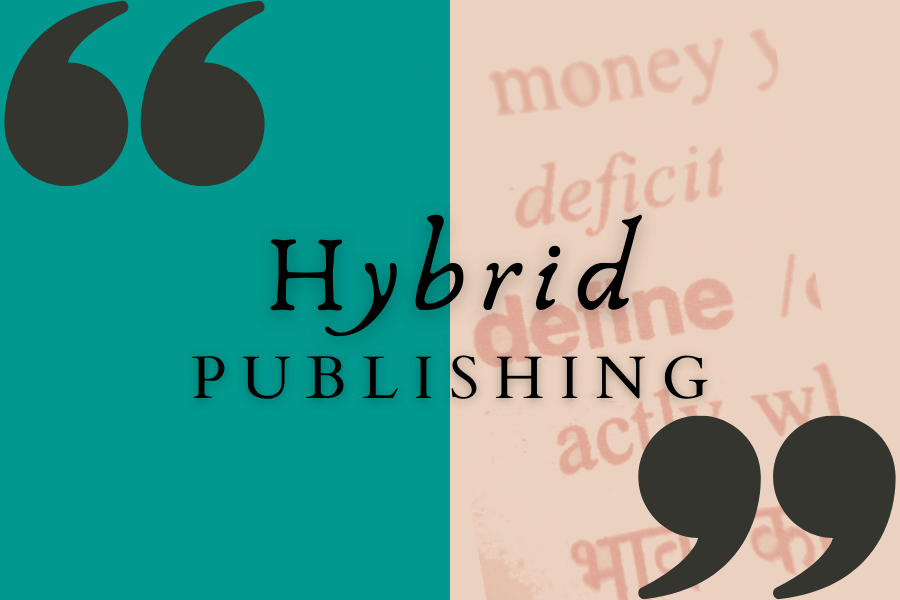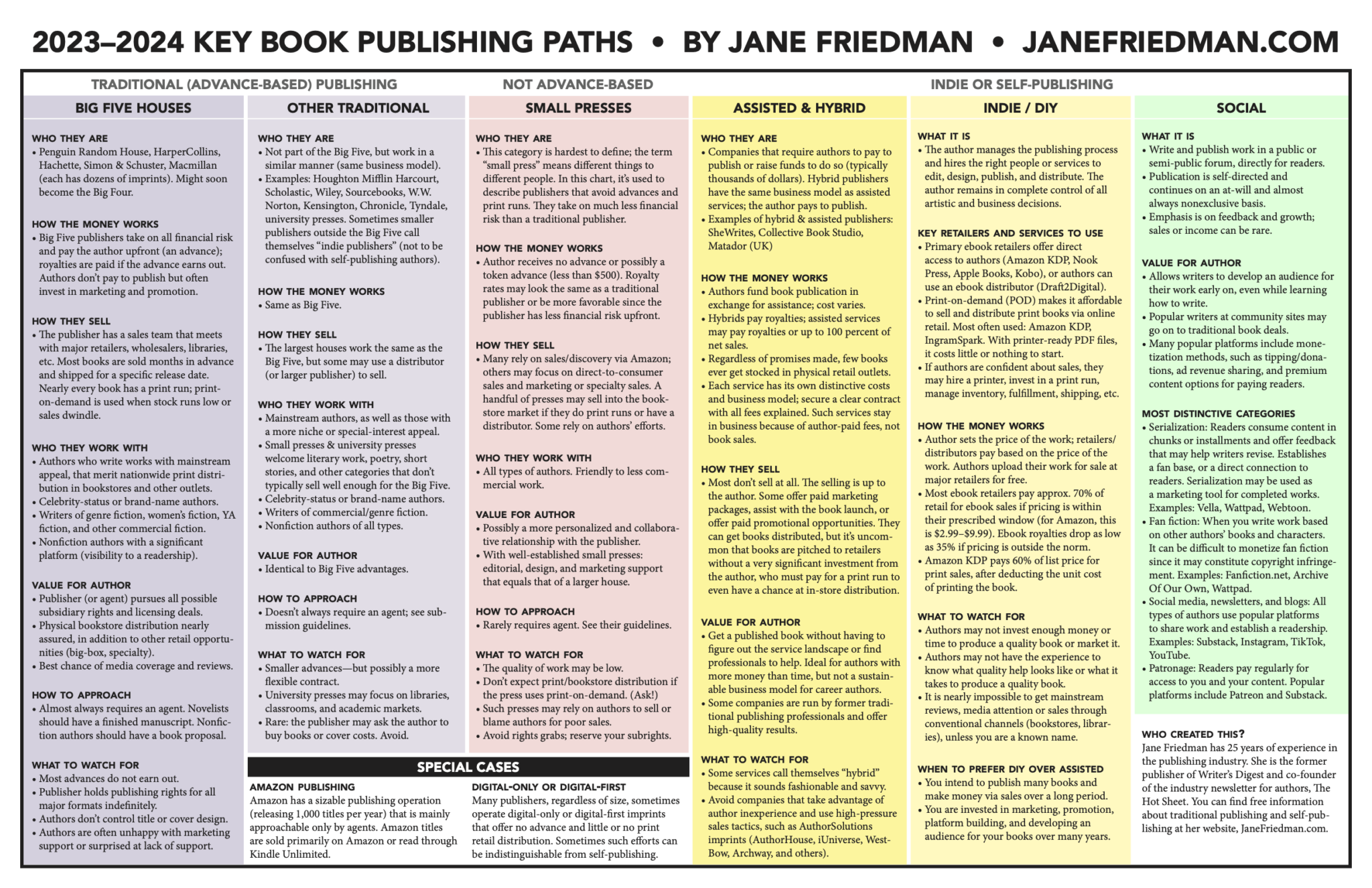Published: March 31, 2021
(Especially if You’re a First-Time Author)
Recently, the term hybrid publishing has been gaining traction, and if you don’t know what it is, you should, especially if you’re new to publishing. It’s the best of both traditional and self-publishing worlds: offering a way to publish a professional book while also allowing the author to participate in the bookmaking process.

According to Bowker, there were more than 1.6 million books self-published last year, and the number is growing rapidly. That means a lot of authors out there assume that they’ve cracked the code to quick, easy self-publishing, and they’re talking about it—on their blogs, websites, and social media sites. All that information is out there, begging for you to sift through it so you, too, can find out the best way to produce a book.
But it also means a lot of confusion about the best approach to take, and if you’re wondering how to go about self-publishing, you’re not alone. Even within hybrid publishing, there are lots of models.
In this article, we’ll help you sort them out, and make it easier and simpler for you to determine if it’s a good route for you.
A definition
Let’s start by clarifying what hybrid publishing is, why it’s different both from traditional and “true” self-publishing, and why it’s a viable option for many authors, especially if they are publishing for the first time.
Hybrid publishing is defined broadly as a system in which the author and publisher both assume responsibility for some or all aspects of book production, distribution, and sales.
Unlike traditional publishing, where the publisher makes all the decisions, from the cover design to the marketing strategy, and takes a hefty percentage of the profits, or a DIY scenario (“true” self-publishing), in which the author does everything, from cover design to book layout to sales (and in return receives all the profits), hybrid publishing offers a partnership that includes elements of both traditional and DIY publishing.
Interested in knowing if this can work for your publishing project?
Why should you consider hybrid publishing?
Assuming that you’re not going with a traditional publisher, you can decide to do everything by yourself or take a hybrid approach and use a company to take care of (help you with) almost all the technical and professional aspects of publishing—from editing, to cover and interior design, to extended distribution.
Because there are no specific rules about hybrid publishers, different companies can provide different solutions. And not all are good.
Hybrid, at its best, offers authors the opportunity to participate in the publishing process with professional assistance.
Some companies act more like publishers and select the manuscripts they work on; others (like Luminare Press) don’t restrict access to their services, meaning that almost any author with a finished manuscript can hire them.
Jane Friedman has done an amazing job in summarizing the main book publishing paths, so we’ll take it from there to try to clarify some of the pros and cons about hybrid publishing, who is more likely to benefit from it, and when it may be your best option.

The best of both worlds
As a middle-ground option between traditional and self-publishing, you can get the best approach of both.
Want to have some control over your cover but still be sure your cover is consistent with others on the market? Having a bona fide professional cover designer produce it will ensure that your cover doesn’t mark you as an amateur. Do you need help setting up your title to optimize print and e-book distribution or with understanding sales discounts? The hybrid publisher acts as a trusted partner that can handle that without you having to comb the web for answers and take a chance on uploading the files yourself. Need editing or a proofread before your book is up for distribution? You can usually access professional editors at reasonable prices.
Hybrid publishing guides the author through the process providing an invaluable education.
If you’re interested in getting a professional book and learning a lot about the book publishing industry, hybrid publishing is a great route for you. Hybrid publishing, and its variant, assisted publishing, guide the author through the process, which, if you’re a first-time author, should provide an invaluable education. Though the extent to which the author is involved in assisted publishing is probably greater, both models encourage author involvement in all aspects of the process. And more importantly, hybrid publishers understand the broad landscape of publishing, as opposed to an author who does it one way and assumes that’s the best.
The financial arrangements will be different from company to company. Some publishers (including Luminare Press) offer 100 percent of royalties to authors; some take a percentage (usually much smaller than a traditional publisher). But both options offer you a guide through the world of self-publishing, and once you are done, you will have a professional book that you will be proud to market.
Another big advantage of hybrid publishing is having all aspects of your book production coordinated under one roof, making sure nothing is left out of the process. Unlike DIY authors who might be getting cover files from one place, learning interior design on their own, and relying on advice from online sources for information on setup and distribution, most hybrid publishers will provide a wide array of professional services, from editing to book design. They will either set up or help you set up accounts for printing and distribution, offer advice for marketing and sales, and generally steer you in a safe direction.
Of course, all these services, especially when the publisher leaves 100 percent of royalties to authors, have a cost, which the author usually has to pay in advance. Because of this system, hybrid publishing is sometimes associated to vanity publishing, a practice where publishers keep an exorbitant percentage of royalties and make money by forcing authors to buy hundreds or thousands of copies of their own books. Vanity publishers have no incentives to create beautiful books and help clients, which are key for hybrid publishers.
It’s your responsibility to do the homework and find the right publisher. Remember, some people use the term hybrid publishing because it’s trendy, but they are not delivering a particular value. And some companies are just out to get what they can from authors, leaving them high and dry. Before signing up with someone, google the company name and “reviews” and see if most of their customers have been happy. You can also check their rankings on the Alliance of Independent Authors: The Best Self-Publishing Services. (And the Worst.) Rated by ALLi.
Once you are connected with an ethical company that provides the services and model you most need, you’ll have someone to turn to as you navigate the process.
If you’re planning to produce multiple books, such as a genre series or how-to books, you might find that you’ve learned enough from your hybrid publishing experience to choose a different option as you move forward. Maybe you can just get cover and interior files and set them up for publication yourself. Or maybe you’ve learned enough about cover design to try to take a crack at it. But starting with a hybrid option will allow you to go with a less expensive option next time. Whatever you decide in the future, if you want a professional result for your book while saving a lot of time, and you are ready to invest in your work and learn from it, choosing a hybrid publisher as a partner can be the best move for you.
HYBRID PUBLISHING: RECAP FOR BUSY AUTHORS
Hybrid publishing is defined broadly as a system in which the author and publisher both assume responsibility for some or all aspects of book production, distribution, and sales.
Unlike traditional publishing, where the publisher makes all the decisions, from the cover design to the marketing strategy, and takes a hefty percentage of the profits, or a DIY scenario, in which the author does everything, from cover design to book layout to sales (and in return receives all the profits), hybrid publishing offers a partnership that includes elements of both traditional and DIY publishing.
The financial arrangements will be different from company to company. Some companies offer 100 percent of royalties to authors, who will pay for the professional services of the publisher; others profit both from selling services and keeping a percentage of sales. Luminare Press offers affordable options with clear pricing, and authors keep 100 percent of royalties.
As a middle-ground option between traditional and self-publishing, hybrid publishing offers the best of both models.
Pros
• Your book is produced by professional designers.
• All aspects of your book production are coordinated under one roof.
• You have control over your book—it’s going to be your book, as you like it.
• The complex publishing process becomes smooth and much faster.
• You keep a high percentage of author royalties (often 100 percent).
• You learn everything you need to know about self-publishing.
• You have access to editing and marketing resources.
Cons
• It requires an initial investment.
• You are still involved in the process and you’re required to make decisions (that is, the publisher is your partner, but you are the boss).
• Hybrid publishers don’t sell your book for you—marketing remains your responsibility.
If you have a finished, ready-to-publish manuscript, and you agree with us that the pros outweigh the cons, you can schedule a free consultation with us to talk about your publishing project and see if Luminare Press is the right partner for you.